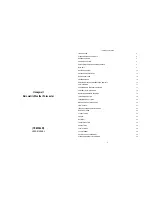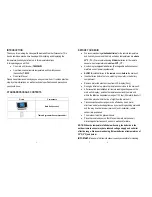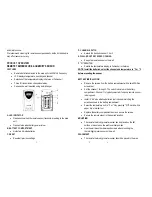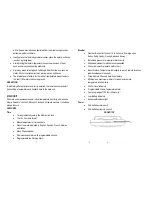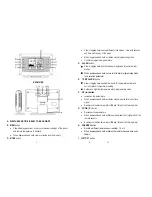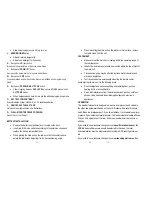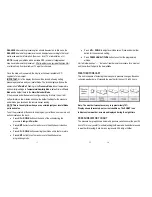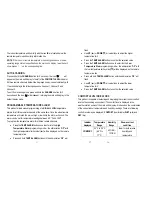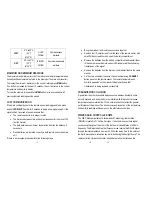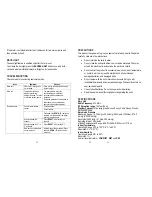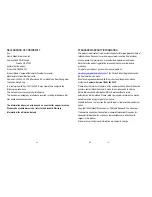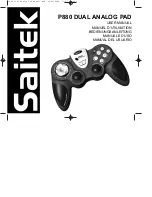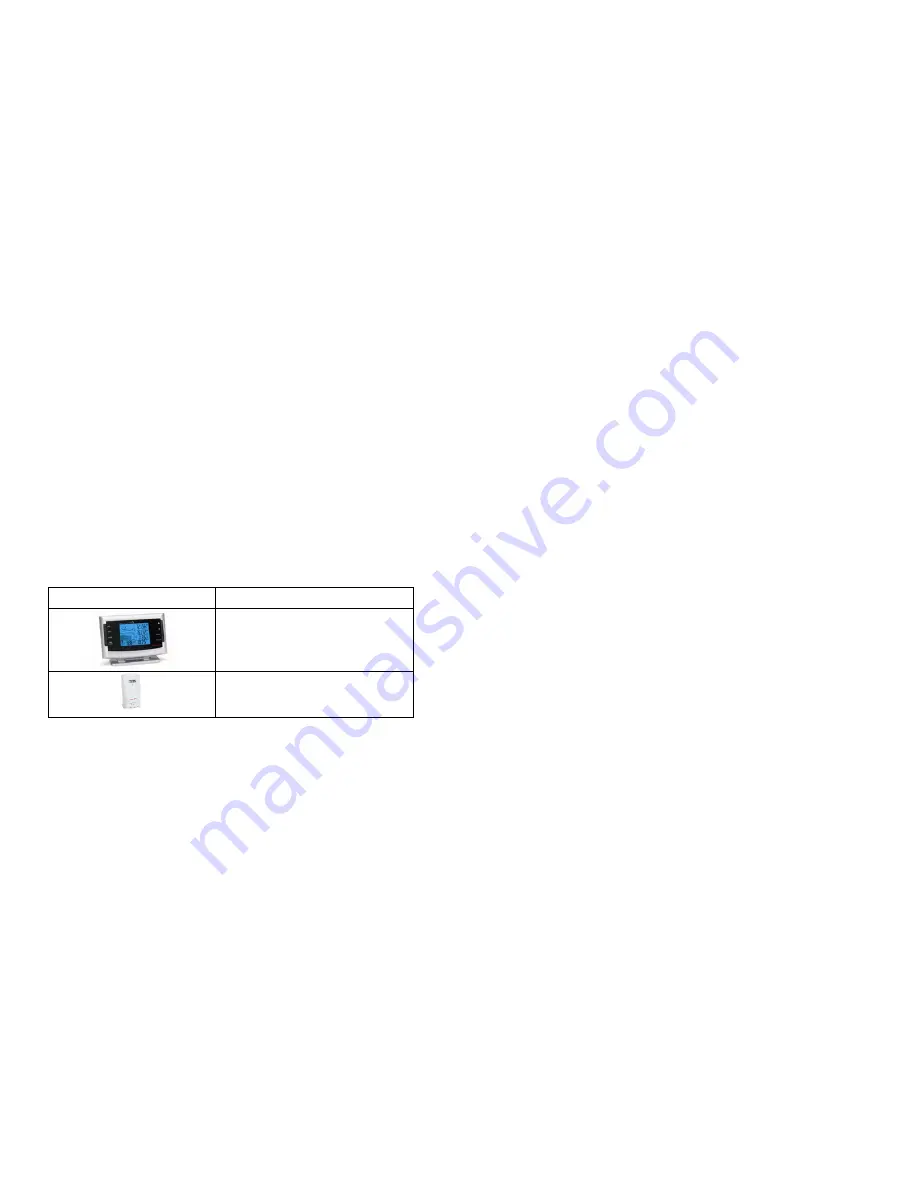
3
3
INTRODUCTION
Thank you for selecting the Honeywell Barometric Weather Forecaster. This
device combines precise time keeping with monitoring and displaying the
temperature/humidity data from up to three remote locations.
In this package you will find:
•
One main unit (receiver)
TE653ELW
•
One three-channel remote temperature and humidity sensor
(transmitter)
TS33C
•
One User Manual
Please keep this manual handy as you use your new item. It contains practical
step-by-step instructions, as well as technical specifications and precautions
you should know.
STANDARD PACKAGE CONTENTS
Picture Components
Main Unit (receiver)
Thermo Hygrometer Sensor (transmitter)
4
BEFORE YOU BEGIN
•
We recommend using
alkaline batteries
for the remote temperature
and humidity sensor and the main unit when temperatures are
above
32°F
(0°C). We recommend using
lithium
batteries for the remote
sensor when temperatures are
below 32°F
(0°C)
•
Avoid using rechargeable batteries. (Rechargeable batteries cannot
maintain correct power requirements)
•
ALWAYS
install batteries in the
remote
sensor
before
the main unit
•
Insert batteries before first use, matching the polarity in the battery
compartment
•
Remove protective plastic screen from LCD display (if any)
•
During an initial setup, place the remote sensor close to the main unit
•
After reception is established (all remote readings will appear on the
main unit’s display), position the remote sensor and the main unit
within the effective transmission range of 100 feet (30 meters).Ideally it
should be placed within the line of sight from the main unit.
•
Transmission/reception range may be affected by trees, metal
structures and electronic appliances, by surrounding building materials
and the way how the receiver (main unit) and transmitter (remote
sensor) are positioned.
•
The main unit must be placed indoors.
•
Place the remote sensor so that it faces the main unit (receiver),
minimizing obstructions such as doors, walls and furniture.
NOTE: When the temperature falls below freezing, the batteries in the
outdoor remote sensor may have reduced voltage supply and a shorter
effective range. We recommend using lithium batteries at temperatures of
32°F (0°C) and below.
IMPORTANT:
Make sure that remote sensor is easily accessible for cleaning

